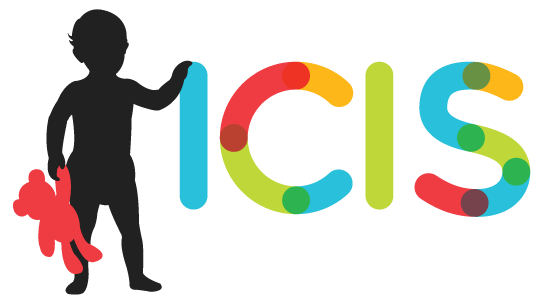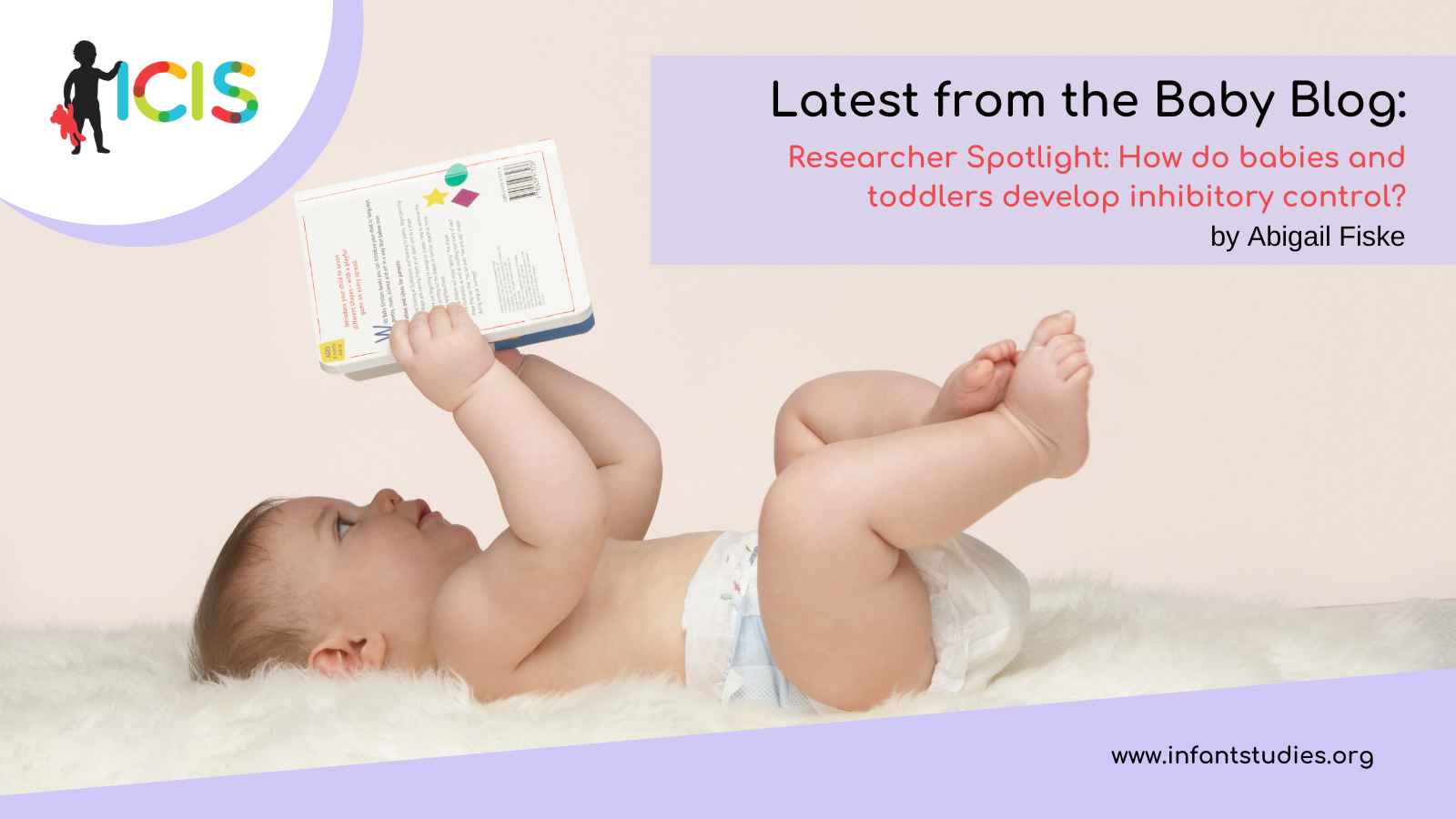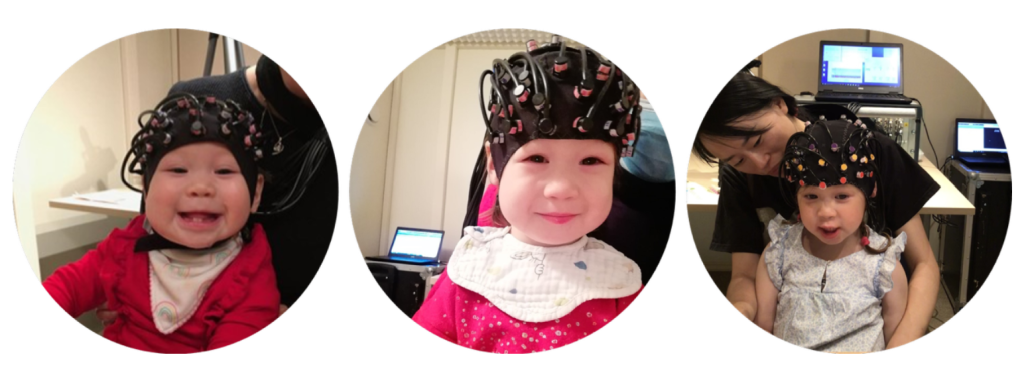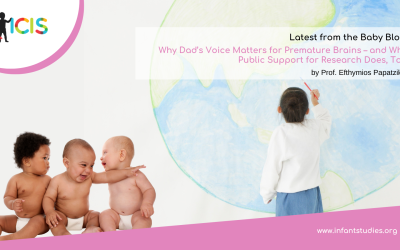One closely related skill to self-control is inhibitory control, a critical executive function that allows individuals to stop themselves from acting impulsively. Without inhibitory control, waiting for the marshmallow would be impossible! It is the force that prevents you from buying that coffee on your way to work when you’re trying to save money, or from typing in your old computer password after you’ve changed to a new one. Inhibitory control is pivotal across the lifespan, influencing everything from academic success (Jaekel et al., 2016) to emotional regulation (Hudson & Jacques, 2014). Much of our knowledge about inhibitory control comes from research with adults; this makes sense, there are lots of things that adults have to stop themselves from doing. And indeed, young children just aren’t very good at stopping themselves from performing a preferred or practiced response. It is often up to parents and caregivers to intervene to help them do so. We tell children when to stop, we say “no”, we teach them to “wait until it’s cooled down before we eat it, otherwise we will burn ourselves”. As such, it should not be a surprise to learn that young children have poor inhibitory control. Yet, research has shown that inhibitory control skills emerge already in the first year of life (Holmboe et al., 2008, 2018)
So how do babies and toddlers fare in terms of inhibitory control? Do they have any control skills at all? If they do, are these skills learned through experience? How do these skills broaden and develop?
During my doctoral research at the University of Oxford, I explored precisely these questions. Through a longitudinal study, we tracked infants and toddlers aged 10 months, 16 months, and 42 months to assess their inhibitory control abilities. Using a novel touchscreen task (the Early Childhood Inhibitory Touchscreen Task; Holmboe et al., 2021), we tested children’s ability to inhibit prepotent (well-learned) responses. This task involved prompting participants to touch a “happy face” button, with the majority of trials appearing on one side of the screen (prepotent trials). Touching the happy face would bring up an animation of a cartoon animal accompanied by funny sounds, whereas touching the blank button on the other side of the screen would not cause anything to happen. However, on occasion (25%; inhibitory trials), the happy face would appear on the opposite side of the screen than it usually did. This required participants to inhibit their prepotent response and make an alternate response in order to see the cartoon.
Our findings revealed that infants and toddlers exhibited limited inhibitory control, with response accuracy dropping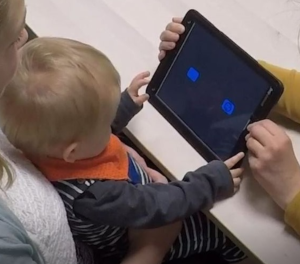 significantly when inhibition was required (Fiske et al., 2022; 2024). However, by the age of 42 months, there was a marked improvement in inhibitory control performance (Fiske et al., in prep), suggesting significant developmental changes during this period (unsurprising when you consider the difference between a 16-month-old toddler and a 3½-year-old preschooler!). Future research should examine predictors of inhibitory control performance in the second and third years of life, as it is likely that inhibitory control abilities improve with the acquisition of language and the consolidation of motor skills involved in walking and exploring the environment in toddlerhood.
significantly when inhibition was required (Fiske et al., 2022; 2024). However, by the age of 42 months, there was a marked improvement in inhibitory control performance (Fiske et al., in prep), suggesting significant developmental changes during this period (unsurprising when you consider the difference between a 16-month-old toddler and a 3½-year-old preschooler!). Future research should examine predictors of inhibitory control performance in the second and third years of life, as it is likely that inhibitory control abilities improve with the acquisition of language and the consolidation of motor skills involved in walking and exploring the environment in toddlerhood.
Whilst children were completing the touchscreen task, we measured their brain activity using functional near-infrared spectroscopy (fNIRS), a child-friendly optical imaging technique. Interestingly, even at 10 months of age, infants exhibited neural activation in the right prefrontal and parietal cortices on trials where inhibition was required – the same brain regions associated with inhibitory control in older children and adults (Fiske et al., 2022). Furthermore, the fNIRS results highlighted that, despite no improvement in inhibitory behaviour, there were changes in the neural substrates from infancy (10-months) to toddlerhood (16-months), such that activation was seen bilaterally and across more regions of the prefrontal cortex, specifically, the inferior frontal gyrus (Fiske et al., 2024). These findings could indicate that the transition to toddlerhood includes a period of neural reorganisation or specialisation in the prefrontal cortex. Finally, we found that activation in both the right inferior parietal cortex and the right inferior frontal gyrus was relatively consistent from 16-months to 3½ years, possibly marking the start of the formation of a mature response inhibition brain network (Fiske et al., in prep).
In summary, while babies and toddlers may initially struggle with inhibitory control, their abilities improve significantly with age, guided by both experience and neural development. While our understanding of inhibitory control development in infants and toddlers is still evolving, this research sheds new light on the emergence and progression of these skills across early childhood. As I continue to delve deeper into this fascinating area of research in the future, I hope to gain valuable insights into the intricate process of inhibitory control development from infancy and across the early years of life.
References
Fiske, A., de Klerk, C., Lui, K. Y., Collins-Jones, L., Hendry, A., Greenhalgh, I., … & Holmboe, K. (2022). The neural correlates of inhibitory control in 10-month-old infants: A functional near-infrared spectroscopy study. NeuroImage, 257, 119241.https://doi.org/10.1016/j.neuroimage.2022.119241
Fiske, A., Collins-Jones, L. H., de Klerk, C., Lui, K. Y., Hendry, A., Greenhalgh, I., … Holmboe, K. (2024). The Neural Correlates of Response Inhibition across the Transition from Infancy to Toddlerhood: An fNIRS study. Imaging Neuroscience, 2. 1-21. https://doi.org/10.1162/imag_a_00206
Fiske, A., Mortimer, A., Collins-Jones, L.H., de Klerk, C., Gattas, S., Dvergsdal, H., …. & Holmboe, K. (in prep). Inhibitory Control Development from Infancy to Early Childhood: A Longitudinal fNIRS Study. Pre-registered at: https://osf.io/swe2j
Friedman, N. P., Miyake, A., Robinson, J. L., & Hewitt, J. K. (2011). Developmental trajectories in toddlers’ self-restraint predict individual differences in executive functions 14 years later: a behavioral genetic analysis. Developmental psychology, 47(5), 1410. https://doi.org/10.1037/a0023750
Holmboe, K., Fearon, R. P., Csibra, G., Tucker, L. A., & Johnson, M. H. (2008). Freeze-Frame: A new infant inhibition task and its relation to frontal cortex tasks during infancy and early childhood. Journal of Experimental Child Psychology, 100(2), 89-114. https://doi.org/10.1016/j.jecp.2007.09.004
Holmboe, K., Bonneville‐Roussy, A., Csibra, G., & Johnson, M. H. (2018). Longitudinal development of attention and inhibitory control during the first year of life. Developmental science, 21(6), e12690. https://doi.org/10.1111/desc.12690
Holmboe, K., Larkman, C., de Klerk, C., Simpson, A., Bell, M. A., Patton, L., … & Dvergsdal, H. (2021). The early childhood inhibitory touchscreen task: A new measure of response inhibition in toddlerhood and across the lifespan. PloS one, 16(12), e0260695. https://doi.org/10.1371/journal.pone.0260695
Hudson, A., & Jacques, S. (2014). Put on a happy face! Inhibitory control and socioemotional knowledge predict emotion regulation in 5-to 7-year-olds. Journal of Experimental Child Psychology, 123, 36-52. https://doi.org/10.1016/j.jecp.2014.01.012
Jaekel, J., Eryigit-Madzwamuse, S., & Wolke, D. (2016). Preterm toddlers’ inhibitory control abilities predict attention regulation and academic achievement at age 8 years. The Journal of pediatrics, 169, 87-92. https://doi.org/10.1016/j.jpeds.2015.10.029
Kahle, S., Utendale, W. T., Widaman, K. F., & Hastings, P. D. (2018). Parasympathetic regulation and inhibitory control predict the development of externalizing problems in early childhood. Journal of abnormal child psychology, 46(2), 237-249. https://doi.org/10.1007/s10802-017-0305-6
Razza, R. A., & Raymond, K. (2013). Associations among maternal behavior, delay of gratification, and school readiness across the early childhood years. Social Development, 22(1), 180-196. https://doi.org/10.1111/j.1467-9507.2012.00665.x
About the Author

Abigail Fiske
University of Oxford (UK)
Abi Fiske is a postdoctoral researcher in the Department of Experimental Psychology at the University of Oxford. Her research uses functional near-infrared spectroscopy (fNIRS) to probe the neural correlates of early executive function development from infancy and across early childhood.
@AbiFiske
